Pretty Good Privacy (PGP) is a mature and well-regarded whole file encryption application. In partnership with PGP Corporation, McAfee and now Symantec, we’ve implemented PGP Command Line on both the IBM i (iSeries, AS/400) and on the IBM System z Mainframe. Our customers often have questions about PGP compatibility with open source implementations like Gnu Privacy Guard, or GPG. Let’s dive into this a bit deeper.
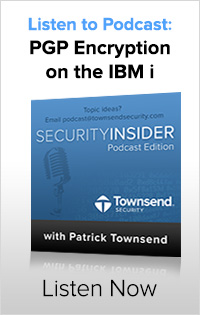 Before we jump into a discussion of solutions and their compatibility, it’s important to know about the Internet standards for PGP. These standards are defined in RFCs 2440 and 4880. The standards are referred to as the OpenPGP standard. These Internet RFCs define the format and behavior for any application that claims to support the OpenPGP standard. They do not define an application, and the term OpenPGP does not refer to any actual application or solution. It is just the name of the standard.
Before we jump into a discussion of solutions and their compatibility, it’s important to know about the Internet standards for PGP. These standards are defined in RFCs 2440 and 4880. The standards are referred to as the OpenPGP standard. These Internet RFCs define the format and behavior for any application that claims to support the OpenPGP standard. They do not define an application, and the term OpenPGP does not refer to any actual application or solution. It is just the name of the standard.
We have a standard for PGP, so now we need to identify which applications implement the standard. That’s important because we want our PGP encrypted information to be supported by the largest number of platforms and vendors.
In the open source world there are several solutions that implement the OpenPGP message format and conform to the RFC standards. Probably the most well known is the GNU Privacy Guard, or GPG, application. It is available on several operating system platforms including Windows, Linux, and Unix. GNU has a large community of developers who support this application and it is readily available. Other open source implementations include Bouncy Castle, the International PGP organization, Portable PGP, and others. While GNU Privacy Guard is actively maintained, other open source implementations may not receive as much on-going attention from developers.
Because of its history with the original developers of the PGP, the most common commercial version of PGP is provided by Symantec. Here at Townsend Security our relationship with Symantec allows us to bring the commercial version of PGP to IBM Enterprise platforms IBM i and IBM System z. We’ve been supporting PGP on the IBM platforms for more than a decade. Other commercial versions are provided by Viacrypt and SDS and are supported by those companies.
The OpenPGP standard assures customers that encrypted files can be processed by any application that supports that standard. The open source and commercial versions mentioned above do implement support for the OpenPGP standards.
The OpenPGP standard is reasonably complex and it is easy to inadvertently introduce incompatibilities. Interoperability testing is crucial to avoid implementation errors. Since there is no independent certification authority for PGP it is up to the open source and commercial vendors to perform interoperability testing. Here at Townsend Security we test our implementation against a variety of open source and commercial versions. We also perform the cryptographic test suite defined by the National Institute of Standards and Technology (NIST) to insure that our implementation of PGP Command Line meets all of the relevant encryption standards. In this respect we are standing on the shoulders of those original giants of the PGP world who brought us PGP and who regularly performed NIST FIPS 140-2 validation.
The IBM Enterprise servers are quite different than their Windows and Linux operating system cousins. You might wonder how easy it is to use PGP on these platforms. Our developers at Townsend Security have worked hard to adapt PGP to these platforms without impacting the implementation of OpenPGP. For example, PGP Command Line for the IBM System z Mainframe fully supports Batch z/OS, multiple z/OS file systems, z/OS text files, and built-in support for code page conversions. Combined with a number of JCL examples of encrypting, decrypting and signing files with PGP it provides a powerful implementation of PGP on that platform.
Our customers on the IBM i and IBM System z regularly exchange encrypted files with partners running GNU Privacy Guard. That compatibility is important to us and we will continue to validate our commercial PGP implementation with GPG through interoperability testing.
Patrick

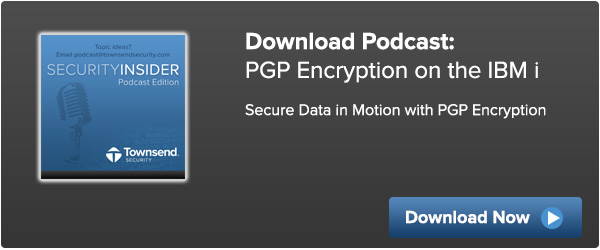
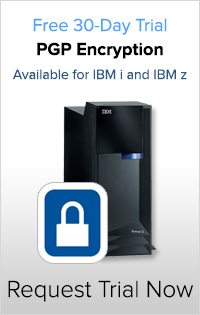
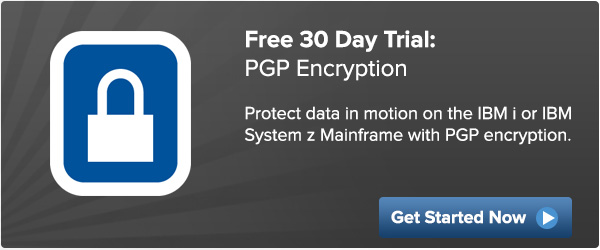


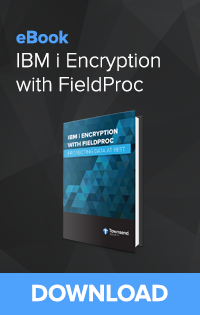
 Enter PGP. PGP stands for Pretty Good Privacy, and before you get too distracted by the name, I can tell you it is actually much better than just pretty good. PGP uses symmetric and asymmetric keys to encrypt data being transferred across networks. It was developed by the American computer scientist Phil Zimmerman, who made it available for non-commercial use for no charge in 1991. To encrypt data, PGP generates a symmetric key to encrypt data which is protected by the asymmetric key.
Enter PGP. PGP stands for Pretty Good Privacy, and before you get too distracted by the name, I can tell you it is actually much better than just pretty good. PGP uses symmetric and asymmetric keys to encrypt data being transferred across networks. It was developed by the American computer scientist Phil Zimmerman, who made it available for non-commercial use for no charge in 1991. To encrypt data, PGP generates a symmetric key to encrypt data which is protected by the asymmetric key.
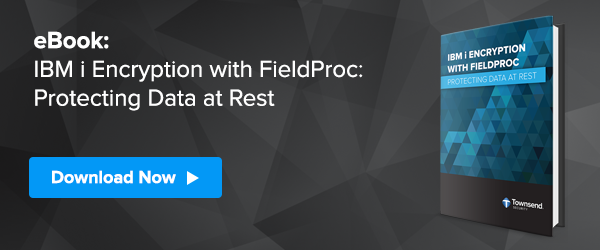
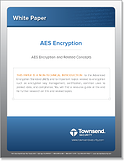

 Really successful technology partnerships are hard to achieve and therefore are rare. There are so many potential pitfalls in this type of partnership that include conflicting goals, changing market conditions, and on and on. That’s why I am particularly pleased with our partnership with Symantec on the IBM Enterprise platform versions of PGP encryption. This technology partnership now spans more than a decade and several mergers and acquisitions. The level of trust and integration between Townsend Security and Symantec has just gotten better over time, and our IBM i (AS/400, iSeries) customers and IBM System z Mainframe customers have benefited.
Really successful technology partnerships are hard to achieve and therefore are rare. There are so many potential pitfalls in this type of partnership that include conflicting goals, changing market conditions, and on and on. That’s why I am particularly pleased with our partnership with Symantec on the IBM Enterprise platform versions of PGP encryption. This technology partnership now spans more than a decade and several mergers and acquisitions. The level of trust and integration between Townsend Security and Symantec has just gotten better over time, and our IBM i (AS/400, iSeries) customers and IBM System z Mainframe customers have benefited. IBM System z customers will be glad to know that we’ve partnered with
IBM System z customers will be glad to know that we’ve partnered with 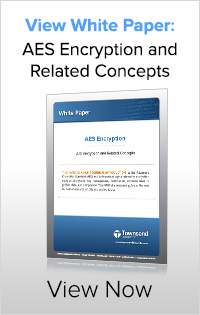
 AES Encryption
AES Encryption 
 Pretty Good Privacy (PGP) is the de facto standard for encrypted file exchange among the world’s largest financial, medical, industrial, and services companies. Based on open standards and tested by time, PGP has won the trust of governments and private enterprises to protect their sensitive data. Here are the six key things to know about
Pretty Good Privacy (PGP) is the de facto standard for encrypted file exchange among the world’s largest financial, medical, industrial, and services companies. Based on open standards and tested by time, PGP has won the trust of governments and private enterprises to protect their sensitive data. Here are the six key things to know about 
 The modern enterprise runs on a variety of computing platforms. The concept of being "an IBM shop" has gone the way of the buggy whip. With cloud computing and virtual machine technology, you may not even know what your hardware base is. This has caused those seeking to realize the benefits of standardization to shift their focus to the software.
The modern enterprise runs on a variety of computing platforms. The concept of being "an IBM shop" has gone the way of the buggy whip. With cloud computing and virtual machine technology, you may not even know what your hardware base is. This has caused those seeking to realize the benefits of standardization to shift their focus to the software.